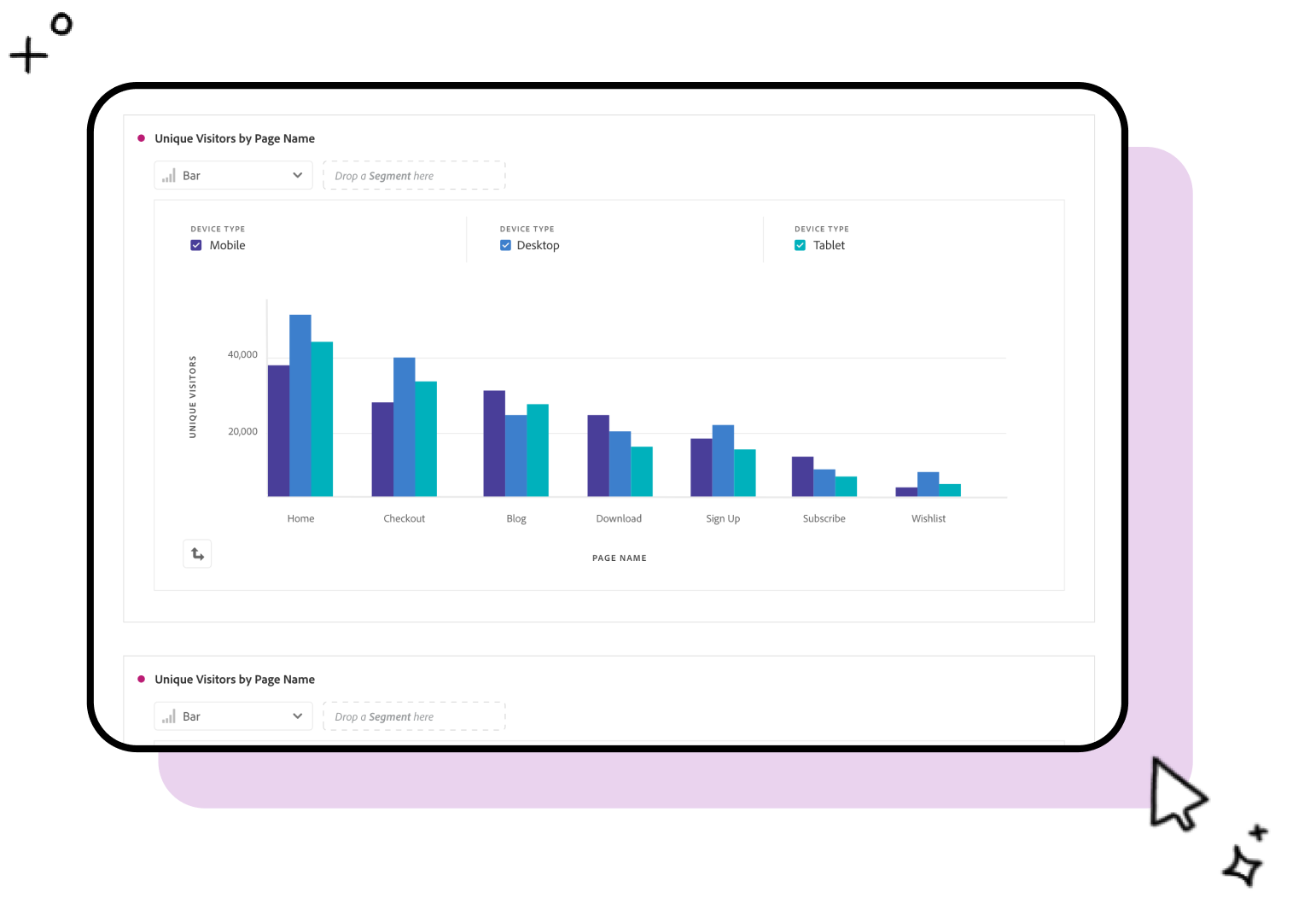

users build data viz


 Warning:
Warning:As Adobe’s enterprise platform for real-time web analytics, Analytics features visualizations as a core part of its everyday user flow. For almost 3 months, I focused on creating an easier and faster way to create data visualizations without the complexity of manipulating a table—plus a couple smaller projects on the side!
This would solve 2 major problems:
ONE.
Right now, the only way to make a visualization like a line or bar
chart is to create a Freeform Table first.
A Freeform Table is great for doing a variety of complex functions, like breakdowns and filters. But even
if the user is
only interested in doing a really simple line chart, they still have to go through the hassle of making a
table.
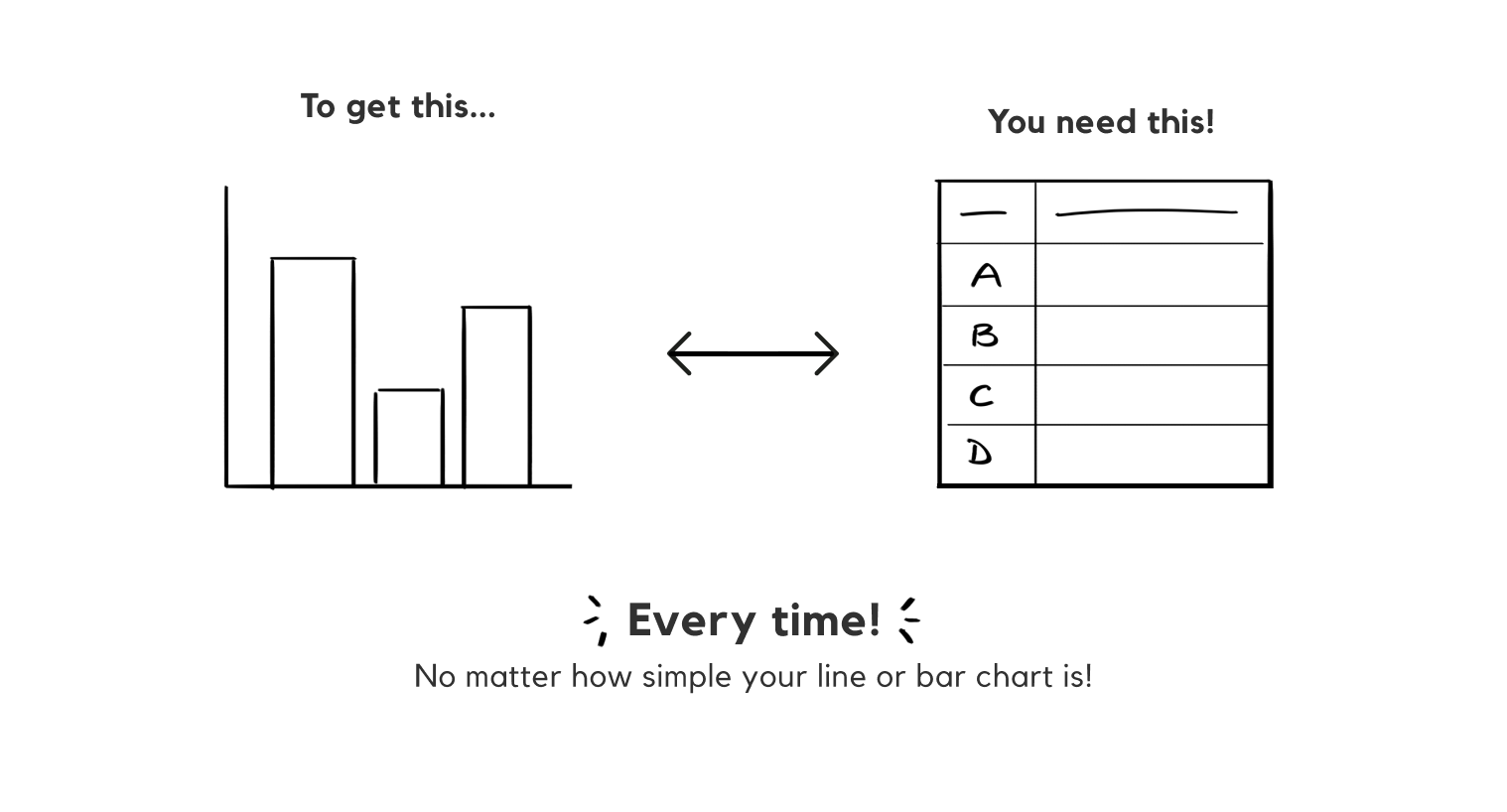
For a novice user who isn't as familiar with how to make tables, or a user who just wants to quickly
create a
visualization they have in their head, this is really inconvenient. Analytics's competitors like Tableau
and Power BI
don't require users to make a table first, either.
TWO.
Analytics offers a wide variety of visualizations, like line, bar, venn, histograms, etc. But not all of these
visualizations are built in the same way. While some charts like line, bar, scatter, and donut
are table-based (ie. need
a table to be built first), others like venn and histograms aren’t, and can be made straight out of the
box. There's no
indication of which build method you'll need until you drag and drop it a visualization into your
workspace.
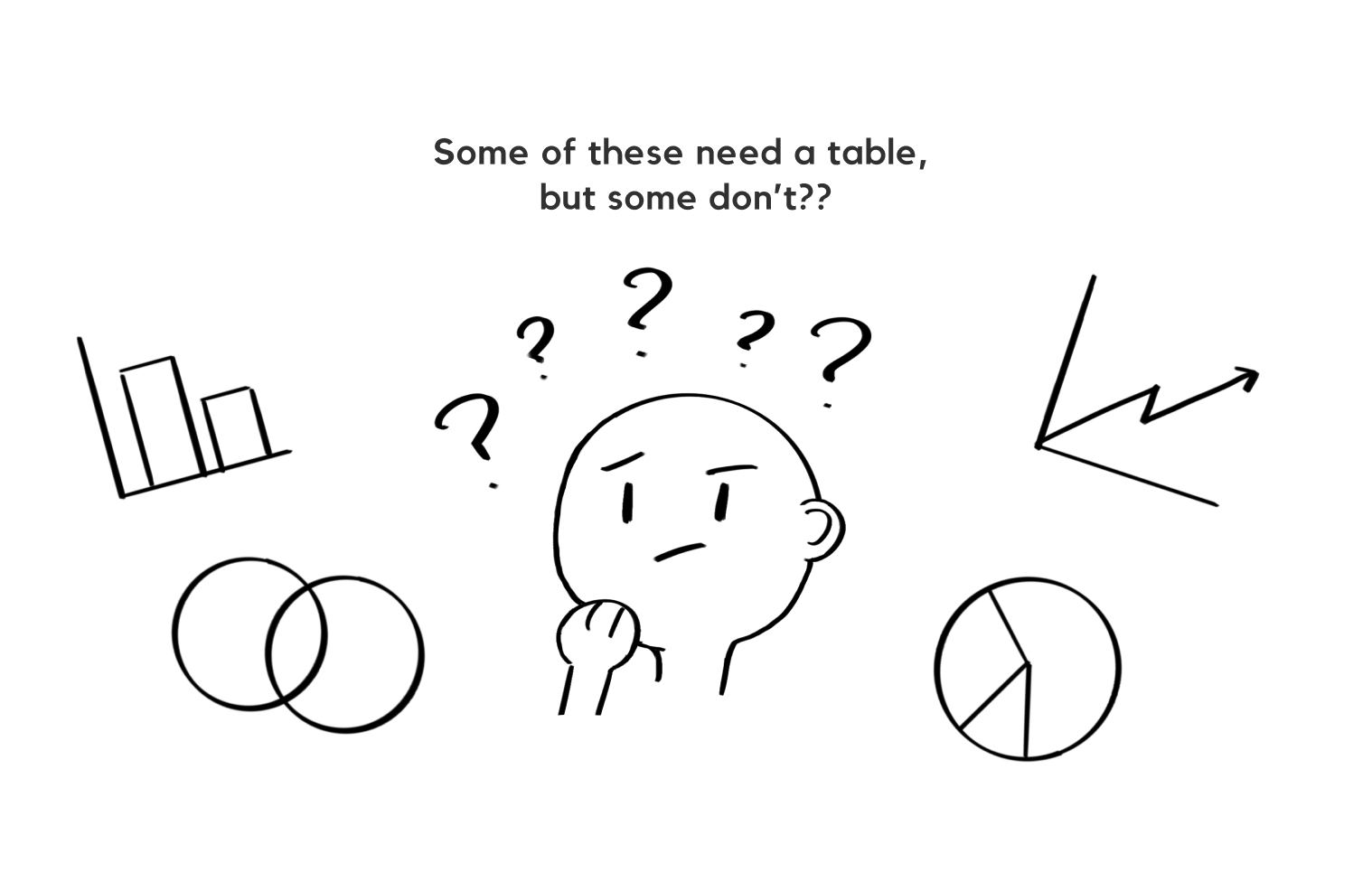
On top of that, the current UI is inconsistent across even visualization types that don't need tables. Here's just a handful of visualization builders in prod:
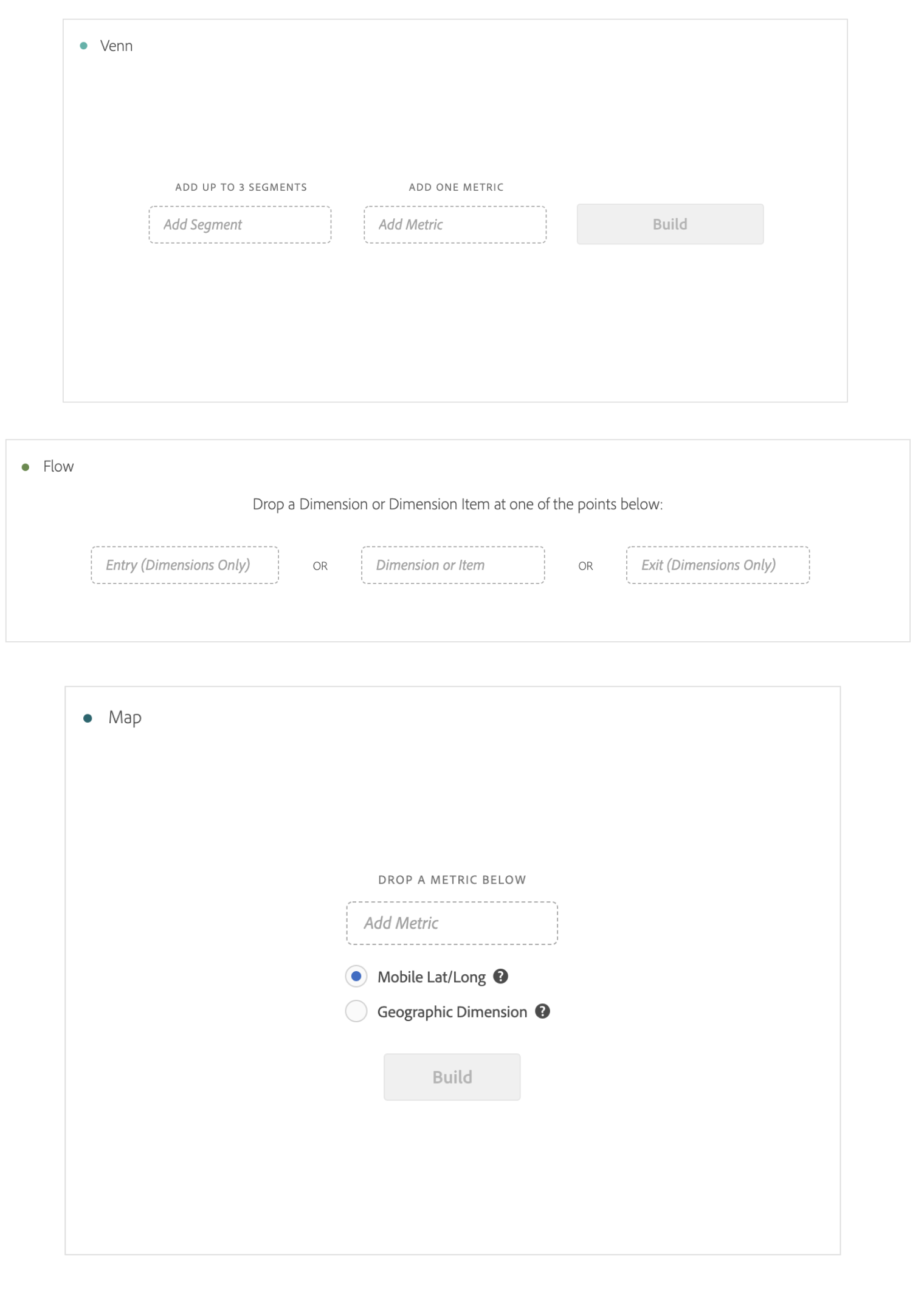
The new viz builder should make the flow much more consistent, requiring no tables and bridging the gap between our table- and non-table-based visualizations.
After watching a few Youtube videos and playing around in a sandbox project, I made an extensive audit of all the different visualizations using Airtable. I documented how they were made, how they could be edited, any error messages that came up, etc.
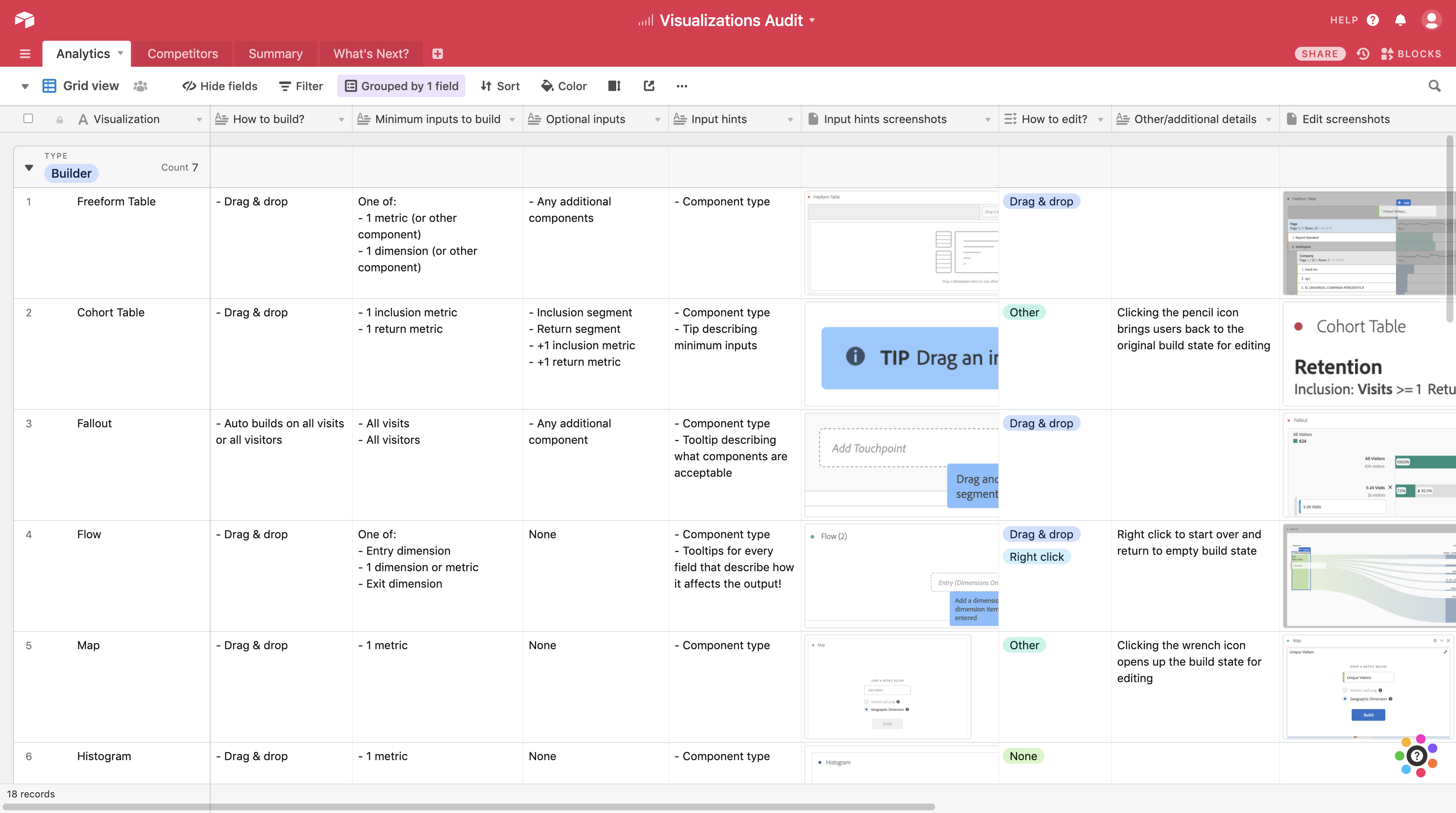
Once I had a pulse on the current state of our platform, it was time to look externally at all our competitors. Of the popular visualization platforms, most didn’t need a table and worked purely on drag & drop—a category we call “builder.”

Then, I ran all of our table-less competitors through the same criteria I used in the audit, looked at how we were doing comparatively, and put together some initial ideas for the cross-disciplinary team to explore as we got started on the project.
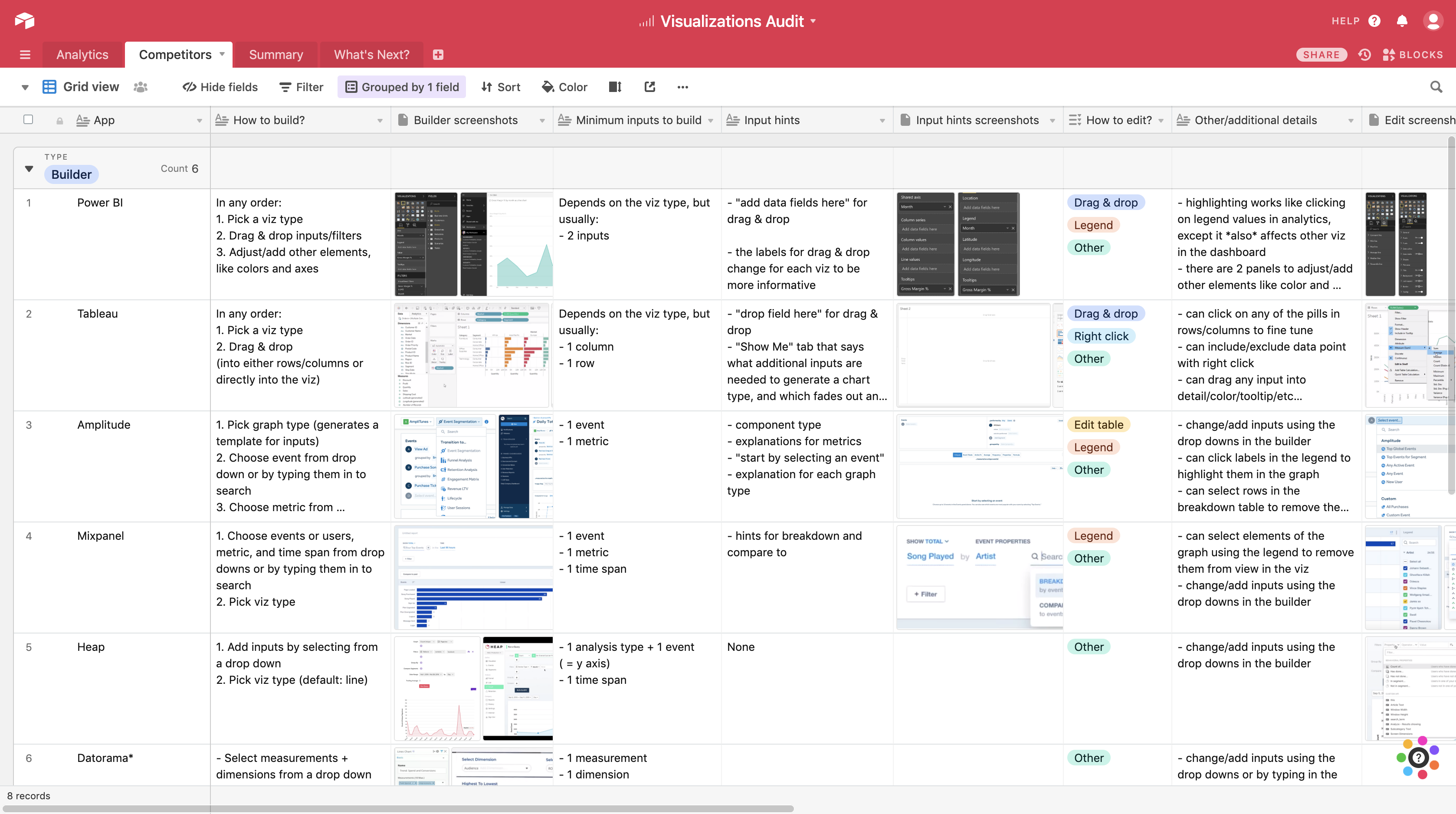
We were looking to hear from 2 types of users:
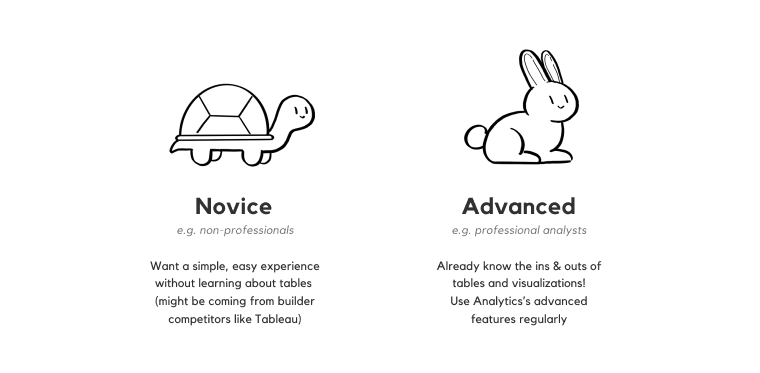
While making data visualization creation more accessible for novice users was one of our goals, we also
wanted to make
this a feature that even our most advanced users would get some good use out of.
In our calls, we asked users about their experience making visualizations in the platform today and how
they might use a
table-less viz builder. They gave us great feedback!
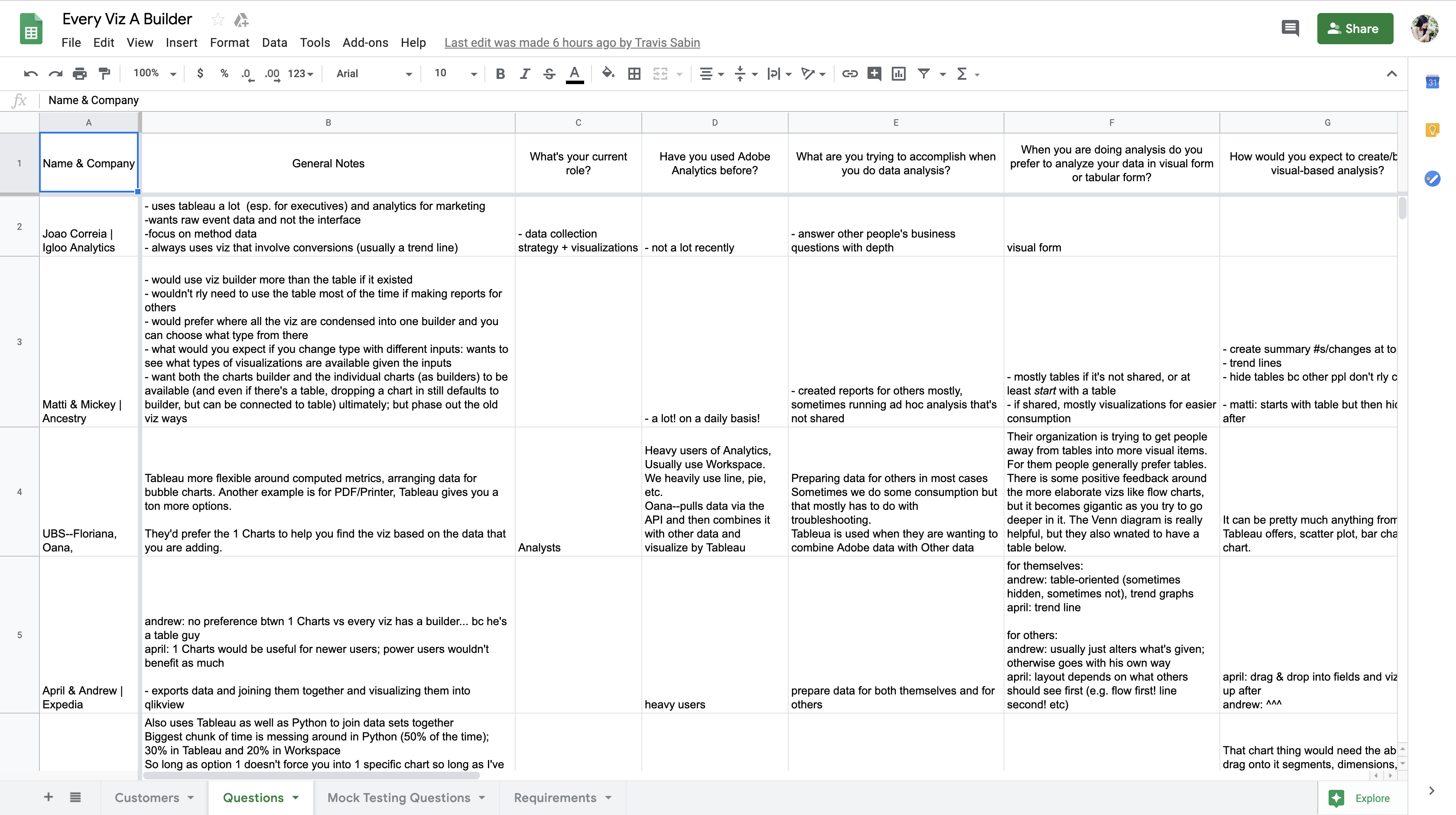
From a week of these calls, we learned that our users had 3 primary needs & wants:
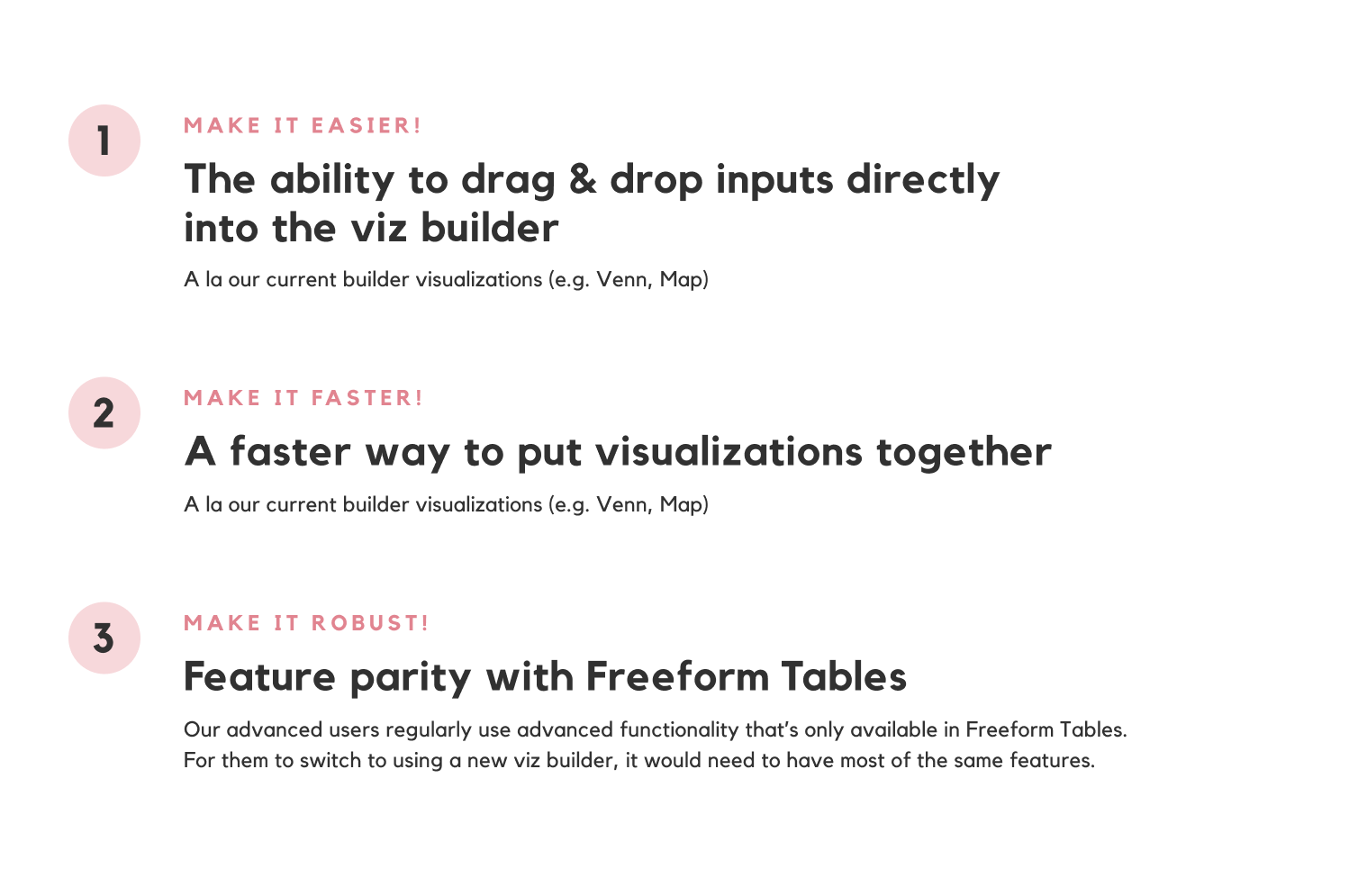
Or to summarize in a few short words, the new viz builder should be easier, faster, & more robust!
I started exploring a bunch of different avenues for the design to go, using Analytics's existing drag &
drop
functionality as a base. I tried to think of ways the viz builder could work that would be the fastest,
prettiest, most
intuitive, and most consistent.
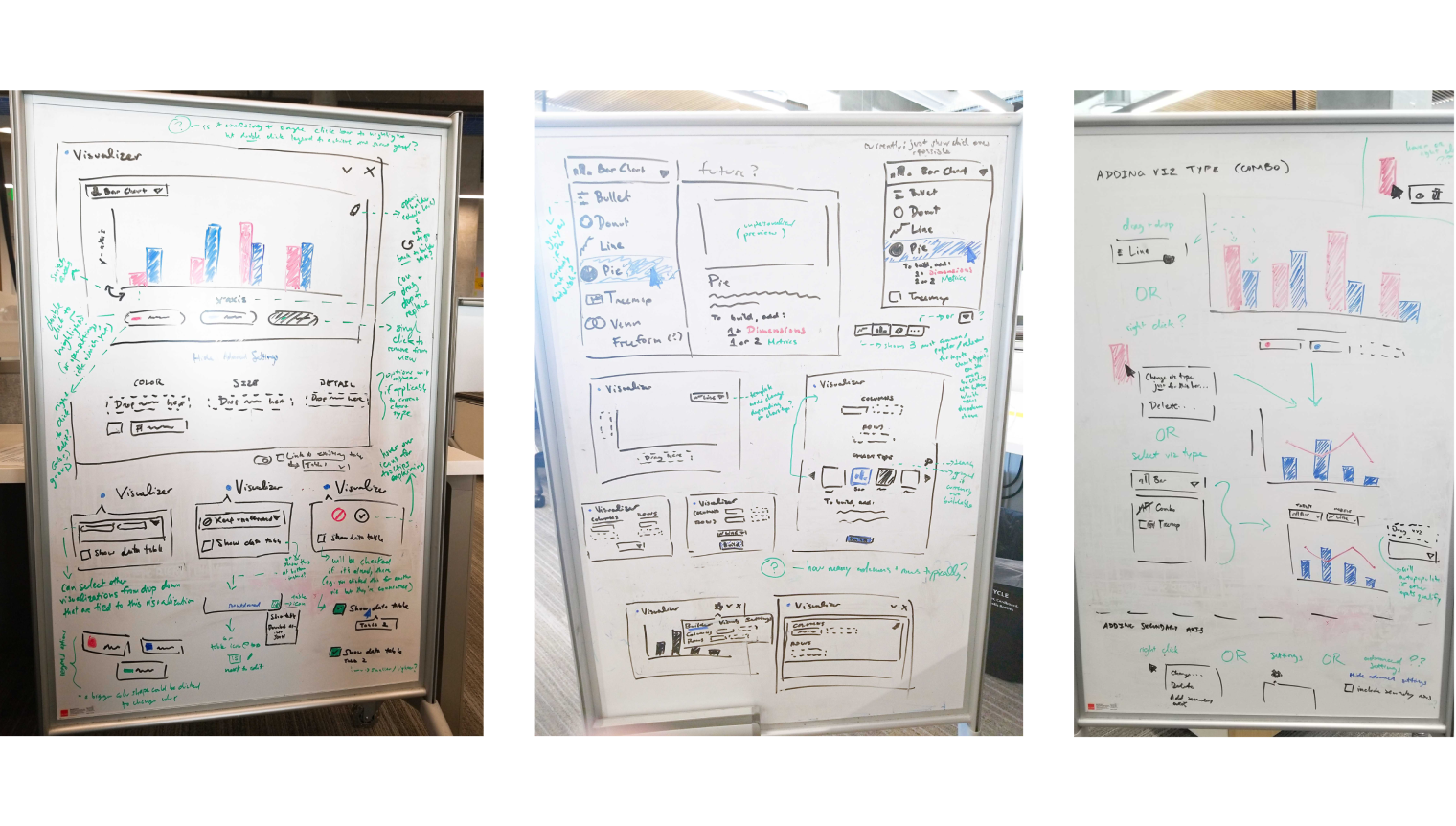
Considering the problems we were trying to address with viz builder and how many features the Freeform Tables has, this ended up being a pretty long exploratory phase (spanning 6 Adobe XD files for organization's sake!). Here's just a snapshot of a few early iterations:
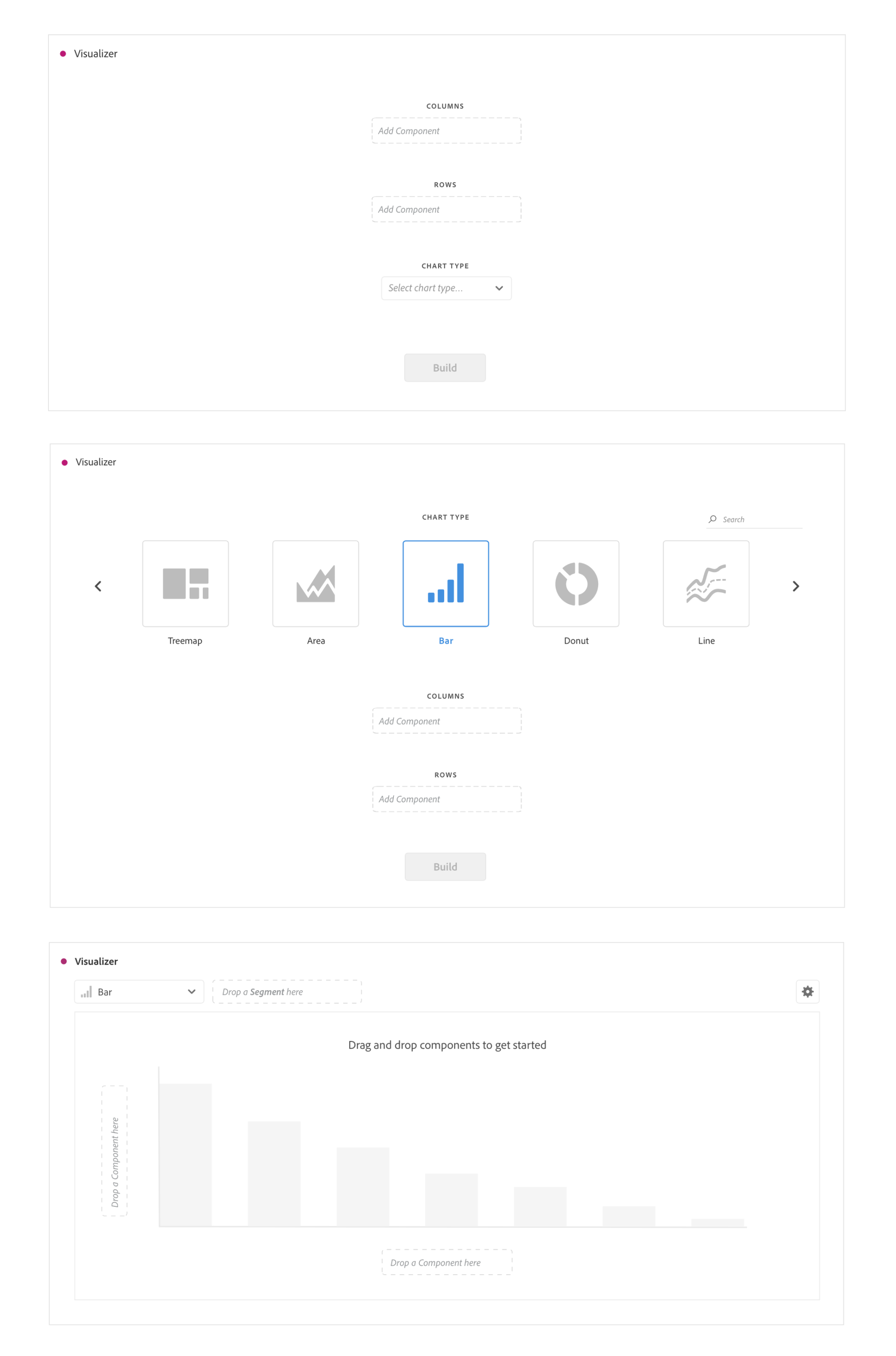
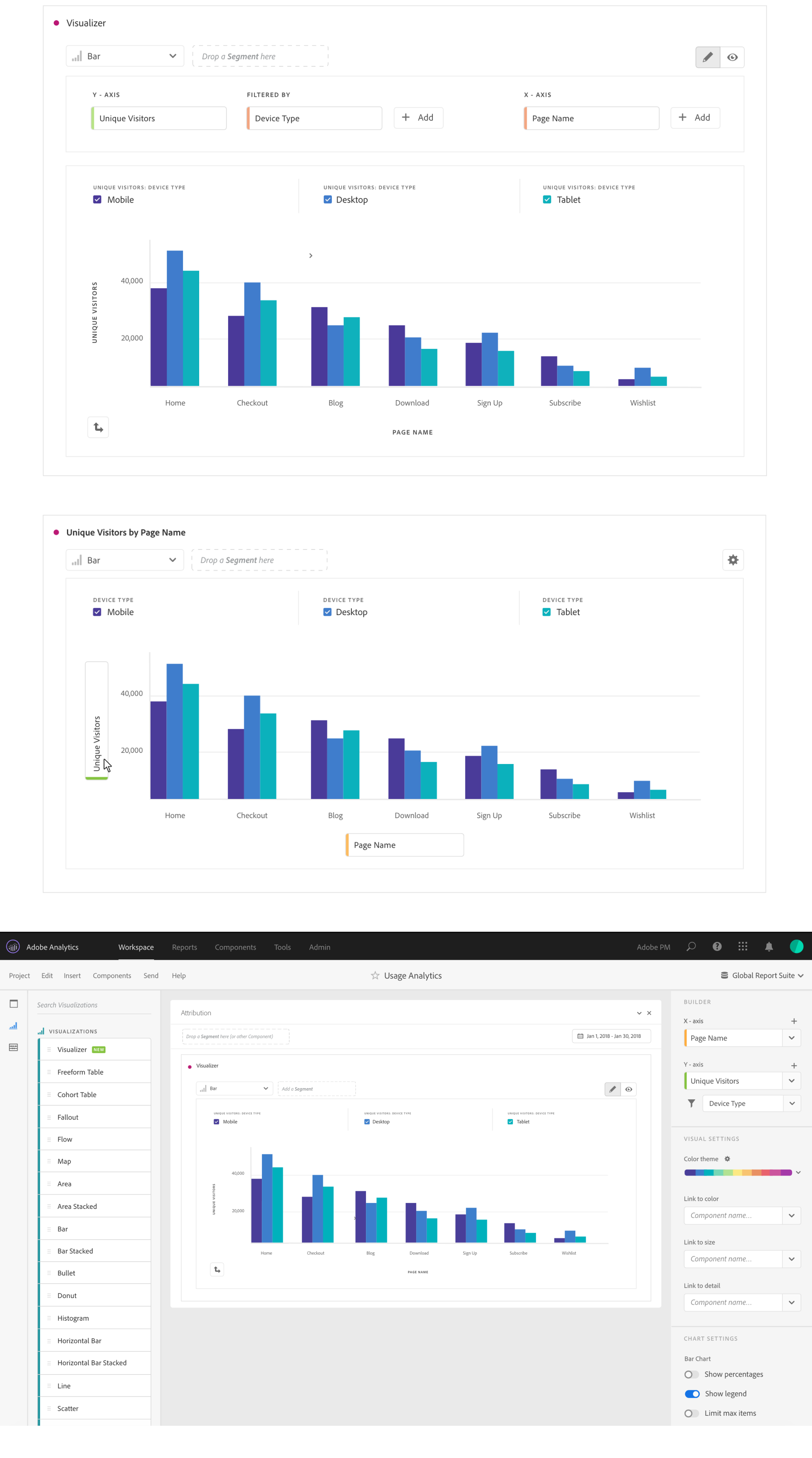
During this process, I spent a lot of time brainstorming how to approach incorporating advanced functions into
a simple viz builder that was also approachable for non-professionals. Taking inspiration from how Analytics already uses microinteractions like drag & drop
as the foundation of its user experience, especially with tables, the new viz builder leaned heavily on those microinteractions too.
In the end, the new designs were full of hover states, using different drag & drop combinations to perform different actions, and right click menus.
After many, many design reviews and xfn team meetings, we narrowed down all the iterations to a select few for usability testing. I created a short script of questions and a simplistic prototype, and together with my PM, we started testing the mocks with users.
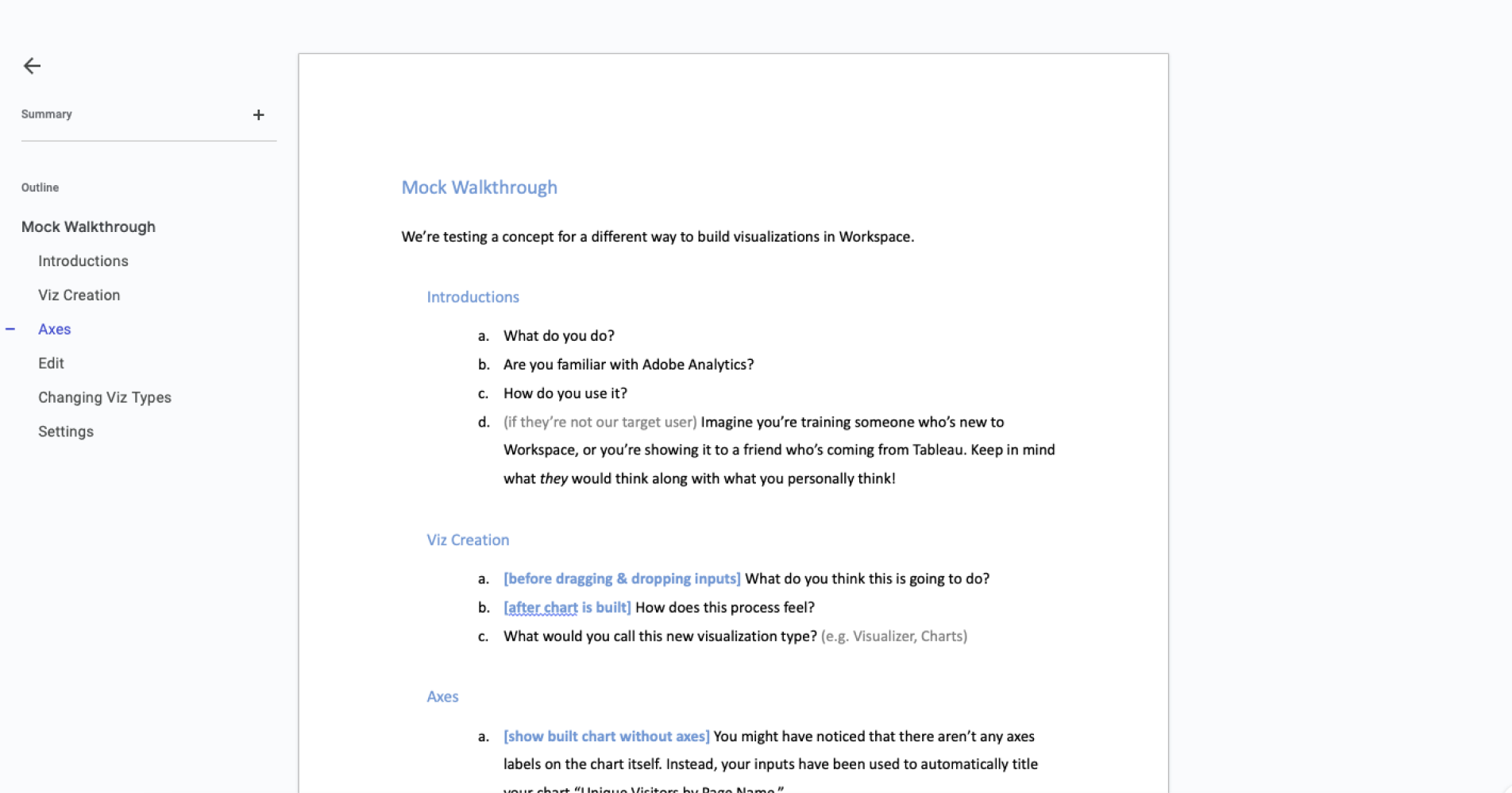
Thanks to their candid feedback, we were able to narrow down the designs and do some last tweaks before landing on the final test candidate!
(Unfortunately, since I was an intern, I had no idea how to prototype drag & drop or hover despite these being the foundations of the experience, so it’s a very simple clickable prototype with no fancy animated interactions.)
I didn’t spend much time on these since they were either bite-sized or purely conceptual, but they were
still fun to
take on outside of my main internship project!
The first of these was a print dialog for analysts to print their
charts for physical reports (surprisingly common for
their line of work, even in an online world!).
While analysts might make lots of visualizations for their own use, they’d often need to collect
visualizations to tell
a narrative or provide a scoped view into a certain area for stakeholders or leads. But Analytics didn’t
have a print
preview or ability to select specific visualizations, so they’d have to print their entire
workspace--terrible
formatting and all--and then physically cut out the charts they needed.
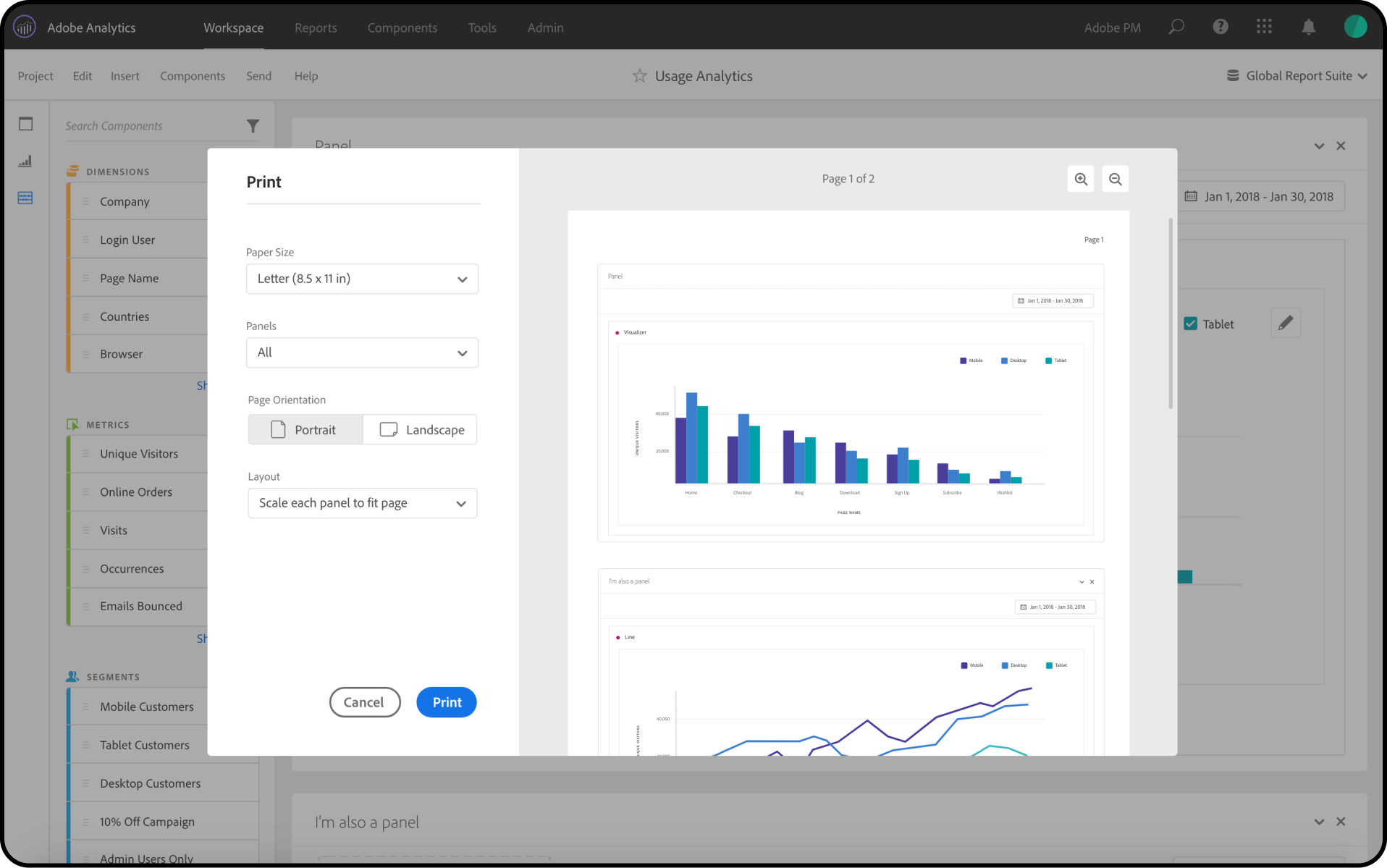
The second project was an accessibility feature, helping users who
have trouble using a mouse navigate dragging &
dropping elements into visualizations.
Vanilla Analytics requires a lot of dragging specific elements from a long list in the left rail over to
the central
workspace, but using a mouse isn’t easy for everyone. What if there was a way to do everything with just a
keyboard?
I took inspiration from the way screen readers progress through the hierarchy of a page, starting from a
page’s big
sections that users can select to dive deeper into the sub-components. I also took inspiration from the
visual design of
macOS’s Spotlight for this concept!
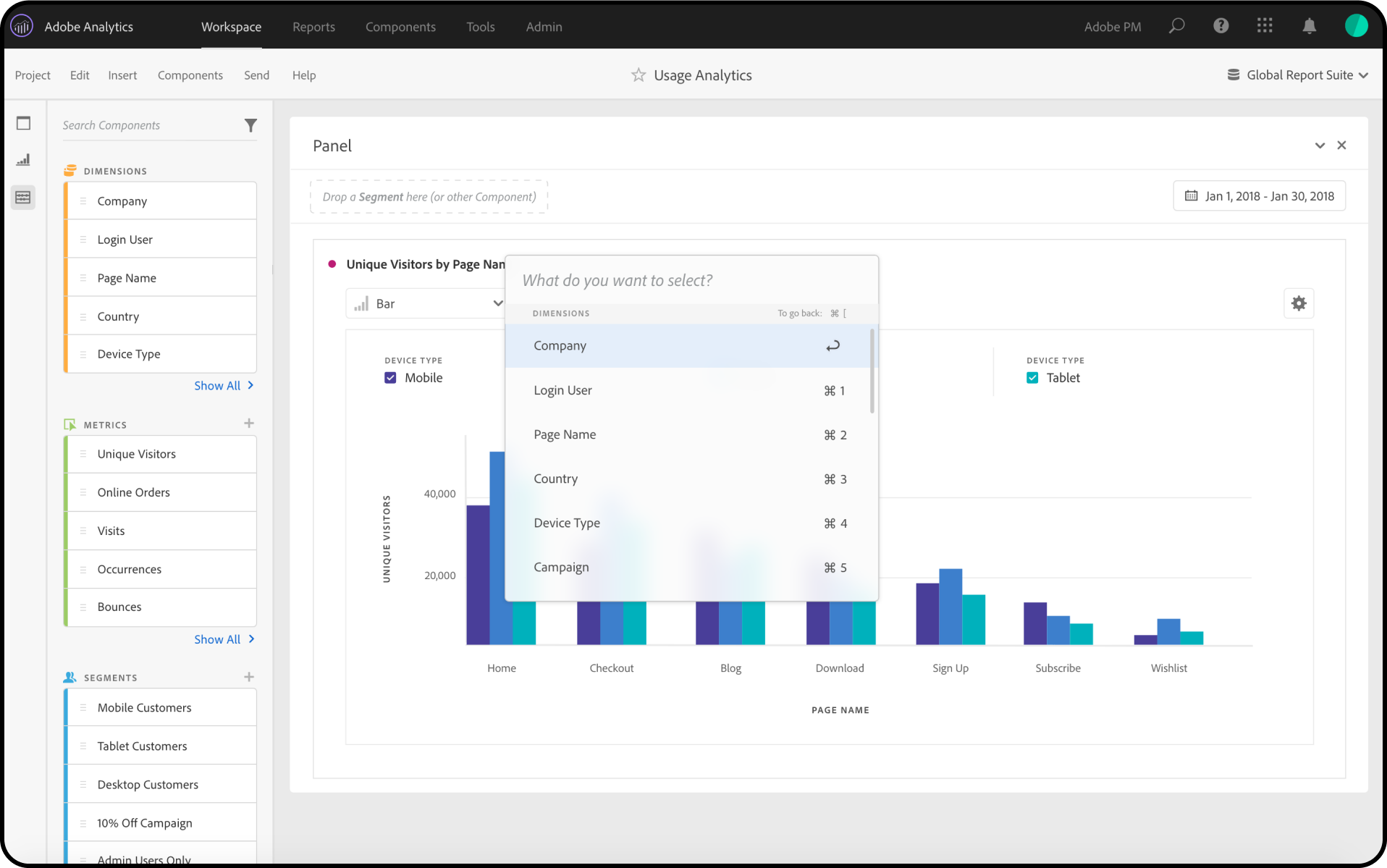
It was a challenging summer diving into the wide and unknown world of data analytics, but I learned so much about how
complex enterprise products can be, and how even more complex it can be to design them in an easy,
user-friendly way! It
was my first time tackling more complex interactions like hover states, right clicks, and drag & drops,
and it was a
blast to see how many features you can fit into one minimal-looking builder.
(As for the outcome of these designs, although I think our engineers intended to build them, I’m not
entirely sure if
they ever made it to prod in actuality!)
